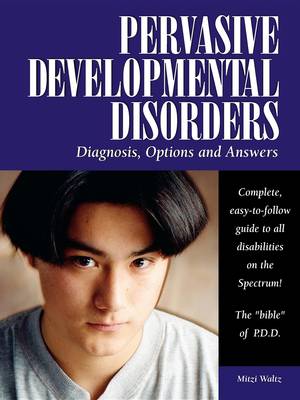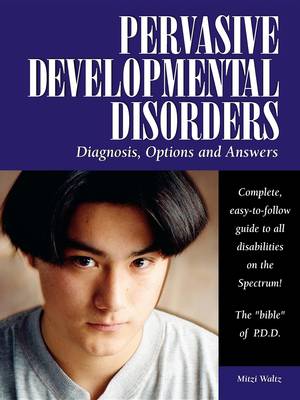
Je cadeautjes zeker op tijd in huis hebben voor de feestdagen? Kom langs in onze winkels en vind het perfecte geschenk!
- Afhalen na 1 uur in een winkel met voorraad
- Gratis thuislevering in België vanaf € 30
- Ruim aanbod met 7 miljoen producten
Je cadeautjes zeker op tijd in huis hebben voor de feestdagen? Kom langs in onze winkels en vind het perfecte geschenk!
- Afhalen na 1 uur in een winkel met voorraad
- Gratis thuislevering in België vanaf € 30
- Ruim aanbod met 7 miljoen producten
Zoeken
€ 48,45
+ 96 punten
Omschrijving
Pervasive developmental disorders (PDDs) include autism and a range of other neurological disorders. While at least 250,000 Americans have been diagnosed with PDD-NOS-one-third of whom are children-twice as many may remain undiagnosed or misdiagnosed. Parents of a young child with undiagnosed PDD may suspect any number of things, from autism to severe allergies. Pervasive Developmental Disorders: Diagnosis, Options and Answers is for parents (or newly diagnosed adults) who struggle with this neurological condition. Medications, therapies, and educational techniques can address symptoms and improve the lives of people with PDD. In some cases, the results can be spectacular. Weaving in a range of stories from parents who are raising children with PDDs, author Mitzi Waltz covers topics such as: . Getting a diagnosis, including preparing for a diagnostic interview in a medical, psychiatric, or school setting, with descriptions of all diagnostic tests and checklists/questions used by professionals .Treatment options such as: medications and supplements; sensory integration; occupational, physical, and speech therapy; behavior modification; "floor time" play and talk therapy; and parenting techniques . Coping with diagnosis and treatment, including emotions and support systems, insurance, and educational plans
Specificaties
Betrokkenen
- Auteur(s):
- Uitgeverij:
Inhoud
- Aantal bladzijden:
- 390
- Taal:
- Engels
Eigenschappen
- Productcode (EAN):
- 9781932565003
- Verschijningsdatum:
- 1/09/2003
- Uitvoering:
- Paperback
- Formaat:
- Trade paperback (VS)
- Afmetingen:
- 211 mm x 275 mm
- Gewicht:
- 920 g

Alleen bij Standaard Boekhandel
+ 96 punten op je klantenkaart van Standaard Boekhandel
Beoordelingen
We publiceren alleen reviews die voldoen aan de voorwaarden voor reviews. Bekijk onze voorwaarden voor reviews.









